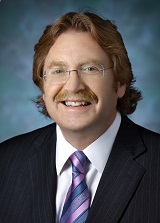
December 2014
Extracoronary Findings With CTA
|

Elliot K. Fishman
|
|
New or improved tools frequently offer unexpected additional functionality. Such is the case with CT angiography (CTA), according to Elliot K. Fishman, professor of radiology, surgery, and oncology at Johns Hopkins Hospital, and the coauthors of “Cardiac CT Angiography Beyond the Coronary Arteries: What Radiologists Need to Know and Why They Need to Know It.”
|
Until recently, a radiologist primarily used cardiac CT to visualize coronary arteries. How have recent technology developments broadened the scope of CTA?
The evolution of CT from 64-MDCT through dual-source scanners has provided the impetus to a rethinking of the role of CT in many clinical scenarios. Many of these scenarios are some of imaging’s most challenging clinical dilemmas and involve vascular structures of the chest ranging from the great vessels off the arch to the individual cardiac chambers and the pericardium. In many cases, the diagnoses are difficult and differential diagnosis is a critical first step. In addition, many pathologies are somewhat similar in appearance on CT scans. The differential diagnosis is broad, but specific CT findings may be helpful. The radiologist must be aware of the range of these pathologies when a chest or cardiac CT scan is ordered.
What types of extracoronary findings are possible with CTA?
Findings range from tumors or thrombi in the cardiac chambers to such congenital cardiac anomalies as atrial septal defects to ventricular septal defects and cor triatriatum. The technique also aids in the evaluation of cardiac valves, especially the aortic and mitral valves. Other possible pathologies include aneurysms of cardiac chambers or a range of diseases that involve the pericardium. Finally, disease of the vessels off the aortic arch, including anomalies, aortitis, and dissection, can be detected and evaluated.
What prompted you and your coauthors to outline a strategy for CTA?
Our team, led by Linda Chu, recognized how current state-of-the-art CT could contribute to careful analysis of cardiac pathology, going far beyond evaluation of the coronary arteries for stenosis. While in the past, radiologists often tended to “ignore the heart” on CT, with fast scanning, the range of pathologies that we can now visualize is impressive. Our own personal experience in reading CT scans made us aware of how often various CT findings went unrecognized and of the opportunities CTA offers for improving day-to-day patient care. The article is a summary of many of the cases we see on a day-to-day basis and how we can recognize the range of pathologies described in the article.
How do you expect this technology to affect patient outcomes?
We believe that this article will give AJR readers a better understanding of the range of diseases that can be recognized on cardiothoracic CT scans. We hope that by helping to define and illustrate many potential diagnoses, the article will enable radiologists better recognize these pathologies. We know that in writing the article, we have also learned a great deal about improving our own capabilities.
If you had a crystal ball, what would you predict for the future of CTA in general cardiac radiology practice?
While the future is hard to predict for many things, it is easy to say that cardiac imaging in CT will flourish. With continued improvement in technology and ever-faster scanning and cardiac gating, we expect that the role of CT will continue to grow. As more people become comfortable with cardiac imaging, the modality will truly have a positive effect on patient care—a prediction that I can promise will come true.